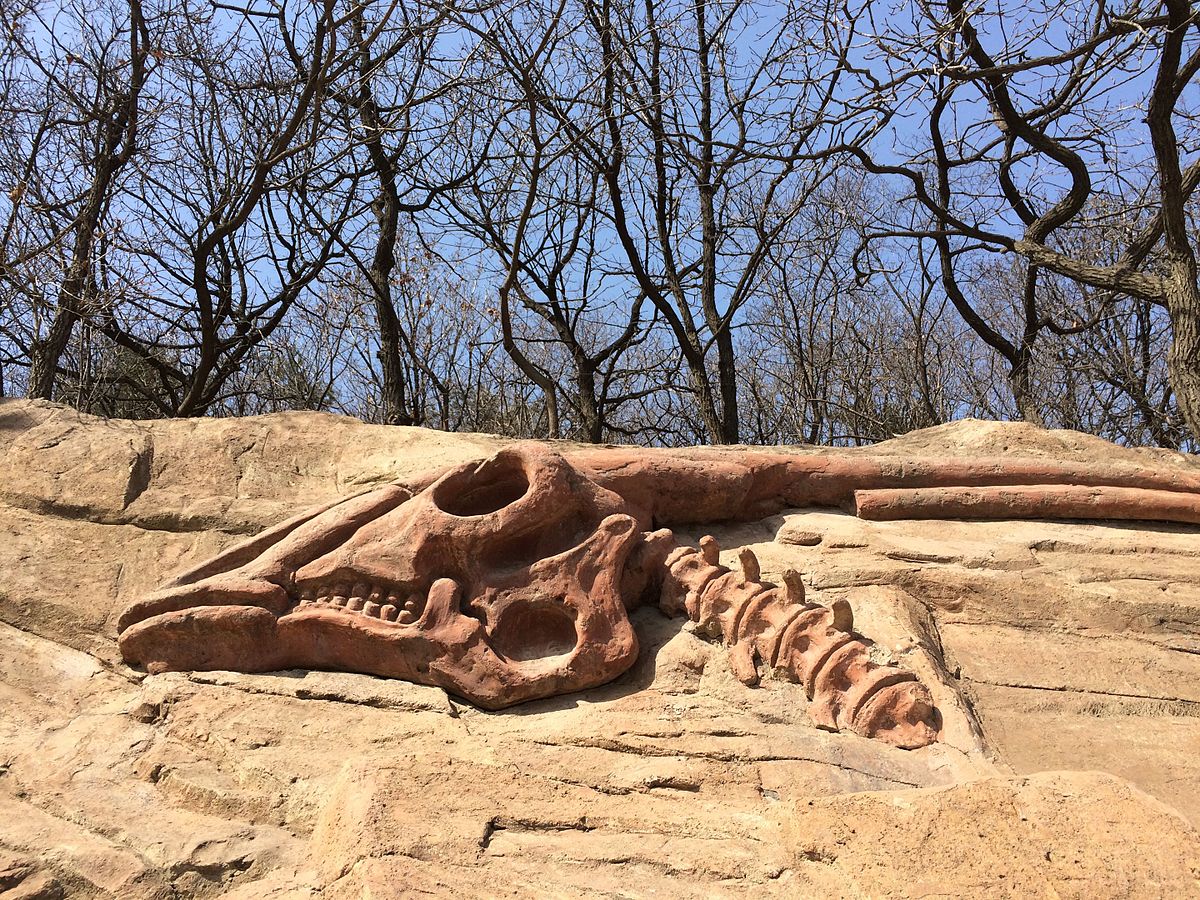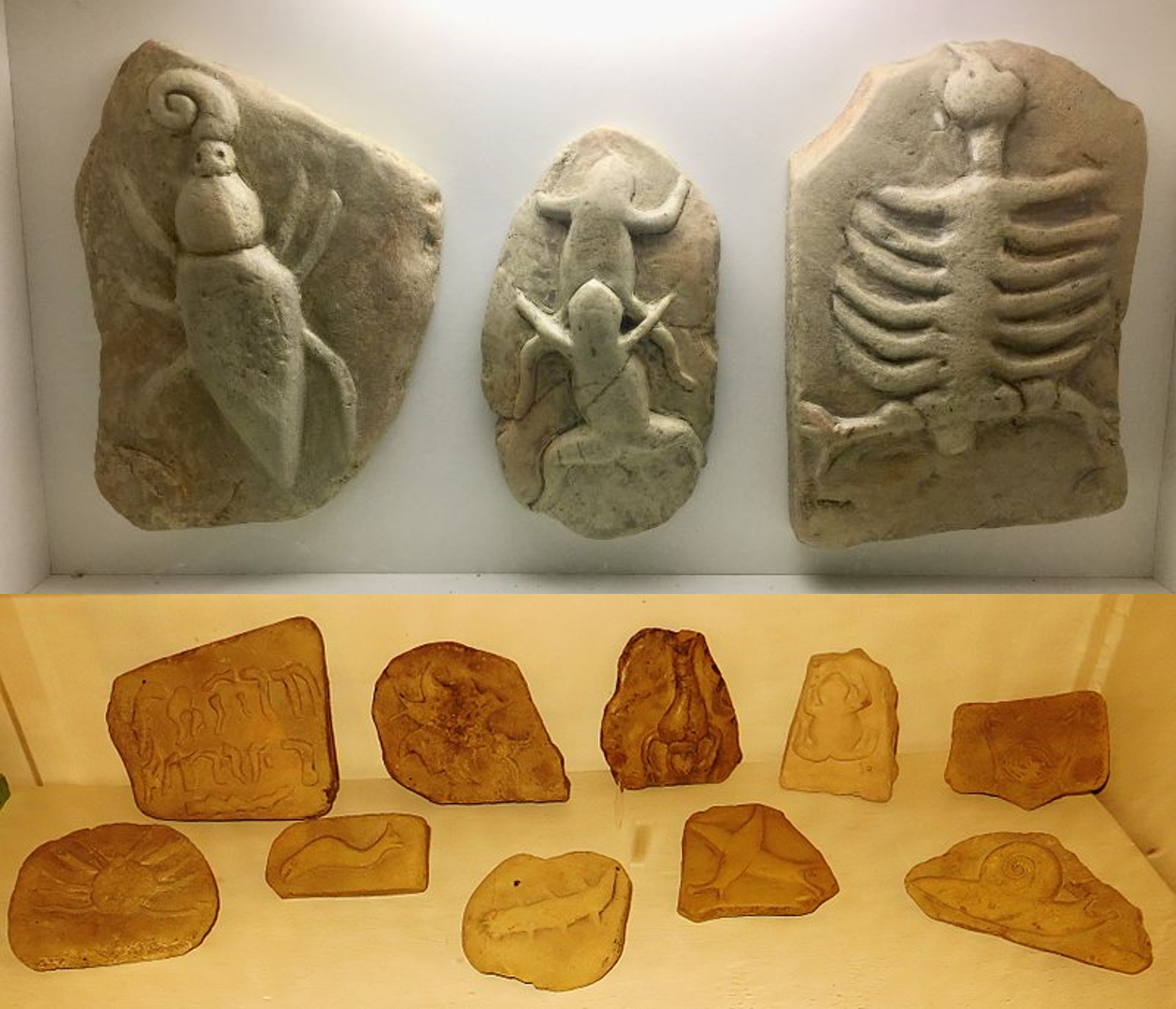Listen to Episode 49 on PodBean, Spotify, YouTube, or wherever you find your podcasts.
And don’t forget to submit your question for our End Of The Year Q&A!
Most of the time on this podcast, we’re geeking out over fossils from around the world. But in this episode, we’re venting a bit about the darker side of fossil-hunting: fraud. We’re discussing fake fossils: why they happen, how they happen, and what effect they have on paleontology.
In the news
A new dinosaur and the origins of long necks in sauropods.
The world’s tiniest dinosaur footprints came from a sparrow-sized dromaeosaur.
A big surprise – elephant-sized mammal-cousin from the Late Triassic.
Tooth analysis of the extinct “marsupial lion” offers clues to hunting style and extinction.
Fake vs. Not-Fake
A fake fossil, for our discussion, is something that is passed off as a real fossil but isn’t. It’s counterfeit, a deception.

So the replica dinosaur bones you might see in a museum – those aren’t fake. Not really. They’re models, copies, likenesses of the originals, meant to give visitors a chance to see something they otherwise couldn’t. The difference is the intent. Educational replicas aren’t meant to be convincing or deceiving, just close enough to stand in for the original.
You’ll also commonly hear the words “fake” or “hoax” or “not real” thrown around in cases of error or re-identification. Common examples include the re-naming of Brontosaurus, the mystery of Amphicoelias, or the story of “Nebraska Man,” which was certainly ridiculous, but not quite fraudulent.
Fakes are designed to deceive. Often this is for financial gain, where forgeries are meant to be sold to tourists or on the black market. In fact, some parts of the world have become notorious for this. Other times fossils are faked for fame or to trick and humiliate someone (examples below).
To Make a Fake
There are many ways to create a false fossil. Some forgers modify real fossils to make them more interesting; others mix and match pieces of real fossils with fake pieces; others sculpt fakes entirely out of rock or clay, or cast them from resin. In all cases, the goal is to make them appear as real as possible, because the intent is to deceive.
Fortunately, there are many techniques to help paleontologists sort out the hoaxes. Chemical tests, X-rays and CT-scans, or even just a practiced eye can spot false fossil material. But every now and then, a fake makes it far enough to become famous.
Famous Fakes
Here are a few stories of fossil frauds that were a little too successful.
Beringer’s Lying Stones. In the early 1700s, a man named Johann Bartholomew Adam Beringer published a volume describing some truly incredible fossils that had been brought to his attention. His book proudly presented over 200 of them, and in total he had gathered up over 1,000. He didn’t know at the time that they were all fake, sculpted just for him, by some apparently vengeful colleagues. Perhaps the most extensive single case of fossil fraud in history!
Read more about – and see! – Beringer’s stones here.

Piltdown Man. This is the most famous fossil fake of all. In the early 1900s, amateur archaeologist Charles Dawson introduced the world to a new ancient human, right at a time when scientists were starting to piece together the story of human evolution. Piltdown Man was an exciting transition: its cranium was shaped like a modern human, while its jaws and teeth were shaped like a modern orangutan … because that’s exactly what they were! Someone (probably Dawson himself) combined modern bones to create the fraud. The reason Piltdown Man is so famous is that it took over forty years for the hoax to be realized by a combination of better dating techniques and a much clearer picture of human evolution.
Read more about Piltdown Man here and here.

“Archaeoraptor.” These days, paleontologists working China know to keep an eye out for fossils that are too good to be true, but in the late 1990s, we were only beginning to understand. “Archaeoraptor” was the name given to a fossil forged by a farmer, sold to a dealer, auctioned off in the US, and purchased by a museum in Utah. It only took about a year for the fossil to be unmasked – it was a composite, two or more skeletons stuck together to look like a “transition,” probably to make it appear more valuable for sale – but not before it was very publicly announced in a National Geographic article. Most of the people involved in this scandal are still active today … and still quite embarrassed.
Read the story – and lasting legacy – of “Archaeoraptor” here, and the actual report of the investigation that followed the event here.

Okay, one more. In 1993, a student was examining a fly in amber which had had quite a journey. It was sold to a collector in the 1800s, donated to a museum, and then studied in the 1960s by a scientist who remarked that it bore a striking resemblance to modern-day flies, little-changed after 40 million years! Well, it was that student who noticed that the piece of amber had been broken in half and glued back together … with a modern-day fly inside!
Read about it here.
Fortunately, these examples are few and far between – that’s why they’re so exceptional and exciting to read about. Embarrassing, yes, but they serve as valuable lessons for paleontologists to be wary of fraud, and they often end up being great examples of how to spot fakes … even if the spotting happens too late in these cases.
More Info
A list of examples of geological fakes and frauds.
And have some more links to examples of fake fossils and how to detect them:
Examples from China
Examples from Morocco
A technical paper on the subject.
—
If you enjoyed this topic and want more like it, check out these related episodes:
We also invite you to follow us on Twitter, Facebook, or Instagram, buy merch at our Zazzle store, join our Discord server, or consider supporting us with a one-time PayPal donation or on Patreon to get bonus recordings and other goodies!
Please feel free to contact us with comments, questions, or topic suggestions, and to rate and review us on iTunes!